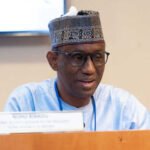The United Nations Children’s Emergency Fund (UNICEF) recently installed solar systems in 14 health facilities in Zimbabwe with the goal to boost health care services in the country.
The solar systems were installed in the country’s Midland province through UNICEF’s Sustainable Energy for Health Programme.
Clean and sustainable sources of energy, which include solar, biomass, wind, and hydro resources, are greatly needed in today’s world due to their low emission and renewable nature.
In a place like sub-Saharan Africa, where as many as 90 percent of its rural population lack access to electricity, renewable energy sources have been filling the void.
The importance of clean and renewable energy is aptly captured in one of the UN’s Sustainable Development Goals (SDGs).
‘Ensure access to affordable, reliable, sustainable and modern energy for all’, the SDG seven reads.
Currently, Zimbabwe generates electricity from hydropower, coal-fired power stations and electricity imports from South Africa and Mozambique.
However, only about 41 percent of its population have access to electricity, according to World Bank data.
Also, in the country’s rural communities, access to electricity has been much lower. According to the Zimbabwe national energy policy report of 2012, only 13 percent of households in rural areas had access to electricity.
Furthermore, the Global Energy Transformation Programme noted in a 2019 report an estimated deficit of approximately 60 percent with regard to consistent power shortages in the country.
This shortfall, as data has shown, is overwhelmingly felt in Zimbabwe’s rural areas, severely impacting the sustainable development of rural communities and, by extension, the achievement of the SDGs in the country.
Poor access to electricity is a significant barrier to quality health care. One study of eight countries in sub-Saharan Africa found that only 28 percent of health care facilities had reliable access to electricity.
The lack of consistent, reliable electricity constrains laboratory testing and use of many electronic health care facilities and equipment.
But with the installation of solar systems in 14 health facilities in Zimbabwe, the UN agency is confident that access to quality health services for over one million citizens will improve.
‘14 health facilities in Midlands province, funded under the Sustainable Energy for Health [Programme], have solar systems installed – critical in improving access to quality health services. Over [one] million people in [Zimbabwe] to benefit from the energy solution’, UNICEF tweeted.
The solar energy solution is also expected to boost the morale of health care staff, and help reduce infant mortality rates by providing better lighting for births at night.
The Zimbabwe government is also targeting to add more than 2,000MW to the national grid, mostly from renewable and cleaner sources by 2030.
Last month, the UN SDG-Fund approved a $45 million programme to transform Zimbabwe’s renewable energy drive.
Co-funded by the UN SDG-Fund and the government of Zimbabwe, the programme aims to catalyse investments in renewable energy for the acceleration of the attainment of the SDGs in the country.
The four-year programme, which is expected to begin in April 2022, also aims to help Zimbabwe achieve its 2030 renewable energy goals by working towards economic development, energy access, climate action, women and youth empowerment and capacity development in renewable energy.
Photo source: UNICEF Zimbabwe





